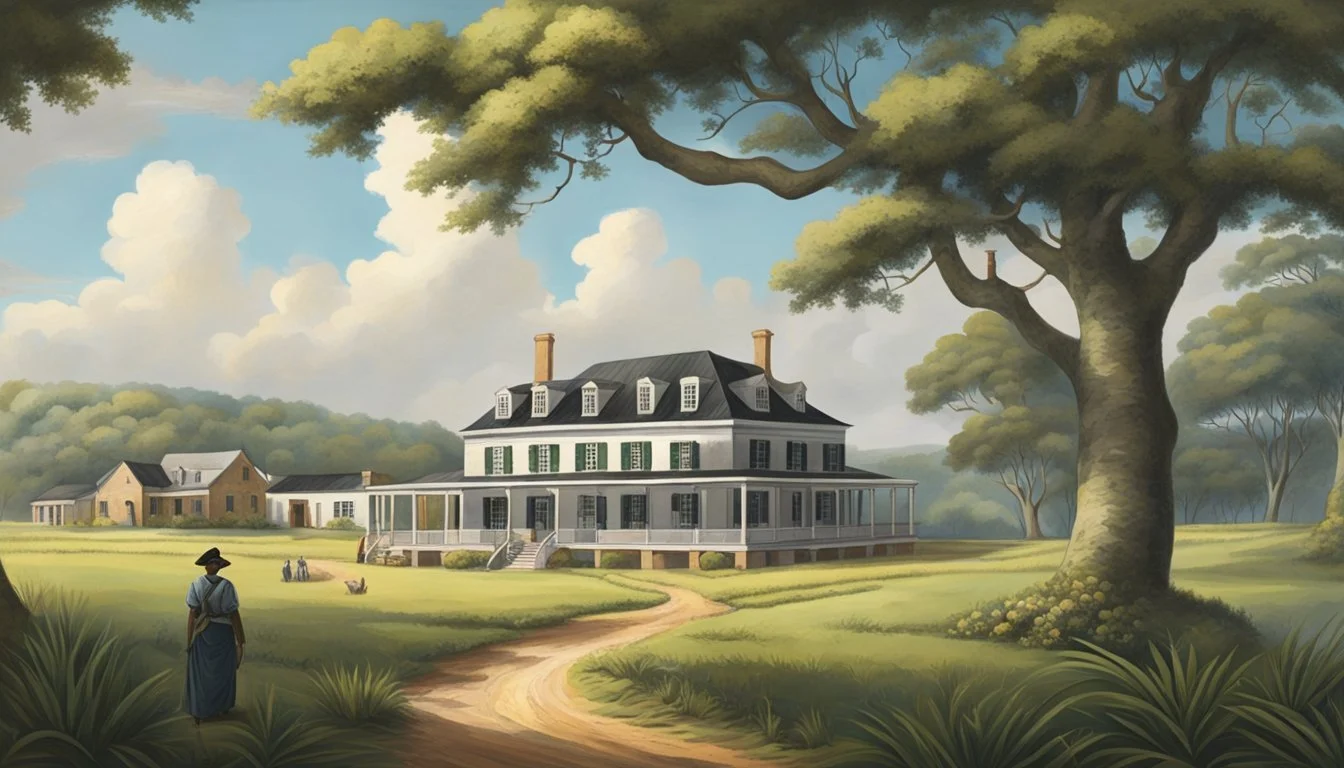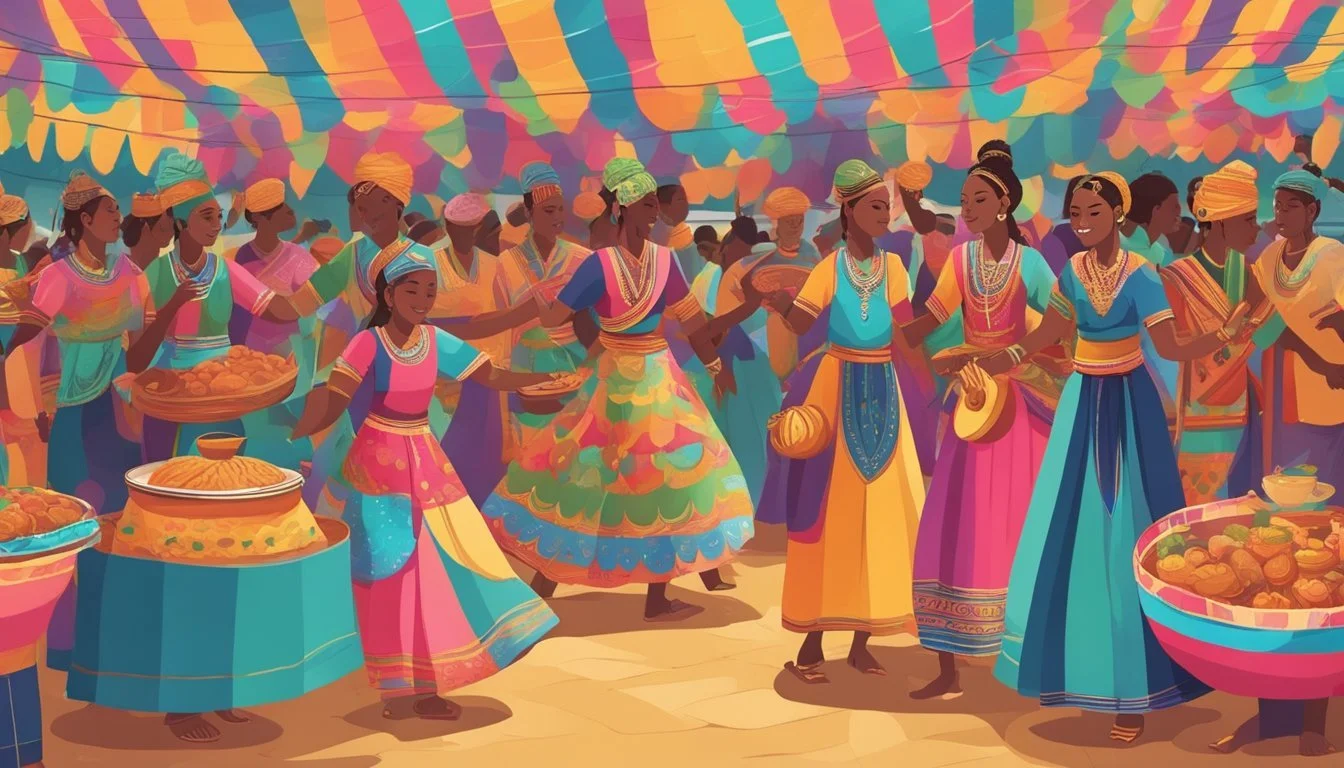Upper South Free Land
Opportunities and Growth Potential
Upper South Free Land
Throughout the 19th century, the notion of "Upper South Free Land" took on significant meaning amid the socio-economic landscape of the United States. The combination of fewer large-scale European immigrations and economic reliance on black labor allowed free blacks in the Upper South to achieve a relatively higher economic status compared to their counterparts in the free states. This area became a unique mixture of developing free black communities and fierce economic competition.
A distinctive feature of the Upper South was its relatively large population of free blacks, surpassing those in the Lower South. These communities made significant strides in establishing their own economic and social structures, contributing to skilled trades in cities like Nashville and Richmond. Despite the adverse conditions, many free blacks managed to carve out a degree of economic independence and social coherence.
However, this progress came with its own set of challenges. As fears of a growing free black population permeated the white majority, harsh laws were enacted to curb their freedom and economic potential. The tension between the aspirations of free blacks and the restrictive policies of the time paints a complex picture of resilience and struggle in the Upper South.
Historical Context
The Upper South played a crucial role in the history of slavery and emancipation in the United States. Key events during the antebellum period, Civil War, and post-war transitions significantly affected the lives of both slaves and freed blacks.
Antebellum Period and Slavery
During the antebellum era, the Upper South had a significant population of free blacks compared to the Lower South. By 1810, over 10% of blacks in this region were free, marking a notable expansion from pre-war periods when less than 1% were free.
Legislatures in the Upper South continuously discussed laws to limit the freedoms of these free blacks, viewing them as a challenge to the institution of slavery. Despite restrictions, many managed to establish small communities and engage in agriculture or artisanal trades. These free blacks stood as living contradictions to race-based slavery, highlighting the complexities and inherent contradictions within the institution.
The Civil War and Emancipation
The Civil War catalyzed significant changes in the status of blacks in the Upper South. As slavery began to collapse, many slaves seized the opportunity to secure their freedom. The wartime genesis of free labor saw former slaves striving to reconstitute families and form independent lives.
With the issuing of the Emancipation Proclamation in 1863, and subsequent Union victories, many slaves in the Upper South found themselves freed. However, freedom came with the challenge of finding economic support and dealing with the social upheaval caused by war.
Post-War Transition and Free Labor
After the Civil War, the Upper South witnessed a difficult transition from slavery to a free labor system. Freed blacks endeavored to create institutions that befitted a free society, such as schools and churches, to support their new-found status. They faced significant challenges, including discriminatory Black Codes aimed at restricting their new freedoms.
Many freed blacks sought work as sharecroppers or tenant farmers, a stark departure from the enslaved labor system. While this arrangement provided some autonomy, it often resulted in economic exploitation and continued poverty. The struggle for equality and true economic independence remained an ongoing battle for former slaves in the Upper South.
Geography and Demography
The "Upper South Free Land" region is distinguished by its diverse topographical features and a dynamic population distribution that has shaped its cultural and economic landscape.
Topographical Features
This region spans numerous states, including Virginia, Kentucky, Maryland, and North Carolina, all notable for their varied landscapes. The Appalachian Mountains significantly define the terrain, contributing to higher elevations in states like Tennessee and West Virginia.
Plateaus such as the Cumberland Plateau and the Ozark Mountains in Missouri add to the complexity of the landscape. Rivers like the Mississippi and the Cumberland traverse these lands, providing vital water resources for agriculture and settlement.
In addition to these natural landmarks, areas like the District of Columbia and parts of Delaware and Maryland offer significant urban topographies, influencing regional development patterns.
Population Distribution and Migration
Metropolitan regions in Maryland, Virginia, and the District of Columbia have seen substantial population growth due to economic opportunities and urban development. These areas attract a diverse demographic, including professionals and students.
In contrast, rural areas in states such as Kentucky and Tennessee maintain smaller, more dispersed populations. Migration trends show movement from less developed areas towards urban centers, impacting local economies.
Regions like North Carolina and Missouri have witnessed demographic shifts, with people migrating from northern states or relocating within the South. These movements are often driven by job prospects, educational opportunities, and lifestyle preferences.
Socio-Economic Factors
In the Upper South Free Land, socio-economic factors played a pivotal role in shaping community structures, economic practices, and labor dynamics during and after the 19th century. Key areas of focus include agriculture, social hierarchies, and the labor market following the Civil War.
Agriculture and Economy
Agriculture formed the backbone of the Upper South's economy. The predominant crops were cotton and wheat, which were critical for regional economic stability. Family farms, often run by free labor, were common. Unlike the Deep South's reliance on large plantations, the Upper South featured smaller yeoman farms that emphasized self-sufficiency and minimal hired labor.
This economic model allowed for greater freedom and liberties among families. It encouraged home-based production and fostered local support systems. Economic self-reliance was a notable hallmark of the region's agricultural practices, reinforcing stable family units and community resilience.
Social Hierarchy and Class
The social hierarchy in the Upper South was distinct from other regions. While it also had a class stratification, the community structure was more egalitarian. The working-class consisted predominantly of yeoman farmers who owned and worked their land.
In contrast to the enslaved labor systems of the Deep South, the Upper South placed a higher value on free labor. This contributed to a relatively broader middle class, enhancing both family stability and political agency. Social mobility, although limited, was more attainable compared to regions with entrenched plantation systems.
Labor and Employment after the Civil War
Post-Civil War, the labor landscape transformed dramatically. The abolition of slavery mandated new labor arrangements. Wages became a common mode of compensation, even in agriculture. Families adjusted to the new economic realities, balancing between wage labor and subsistence farming.
The introduction of wage labor led to shifts in economic practices but also brought about social challenges. There was a need to secure steady employment and manage fluctuating rations and supplies. Despite these challenges, the Upper South maintained a degree of economic and social stability, in part due to its existing structures of family-run farms and localized community support.
Legal and Political Developments
During the antebellum period, the Upper South saw various legal and political changes that significantly impacted free blacks and the institution of slavery. These changes involved legislation on slavery and freedom and the roles of border states, such as Maryland and Virginia.
Legislation on Slavery and Freedom
Numerous laws were enacted in the Upper South to regulate slavery and the status of free blacks. Virginia and Maryland led in crafting legislation regarding the lives of free African Americans. Free blacks had strict rules to follow, including curfews and travel permits.
Thomas Jefferson's advocacy for gradual emancipation reflected the divided sentiment in the region. Free blacks could own property but faced constant legal challenges. For instance, in counties like West Virginia and Ohio, legal restrictions shaped their daily lives.
Free blacks who had been granted land or had purchased it were at risk of losing their property without proof of their legal freedom. Policies were influenced by fears of slave revolts, leading to stringent laws. These legal frameworks often reflected the political tension between maintaining slavery and acknowledging the growing number of free African Americans.
Role of Border States in Shaping Policies
Border states played a crucial role in shaping national policies related to slavery and freedom. Maryland, Pennsylvania, and other border states like Ohio were key battlegrounds. Their geographic and political positions made them critical participants in American history discussions around slavery.
The American Revolution had permitted some states to re-evaluate their stance on slavery, though many border states continued to uphold the institution. Political pressures from both the North and South influenced policies.
Counties in these states often had divided loyalties, leading to varied laws and enforcement practices. For example, in Pennsylvania, the gradual abolition laws highlighted the growing anti-slavery sentiment while neighboring states maintained stricter controls.
Thus, the interaction between legislation and state politics in these regions was pivotal in defining the status and rights of free blacks, shaping the broader discourse on slavery in the United States.
Cultural Aspects
The cultural dynamics of the Upper South free land were shaped by family structures, the growth of free Black communities, and their contributions to literature and historical documentation. This intricate interplay offers a multifaceted view of society in these regions.
Family Structures and Personal Narratives
Family was a cornerstone in the Upper South. Personal narratives often documented the lives of both wealthy and modest households, revealing values and daily struggles.
Many families included members who were quadroons or octoroons, reflecting complex racial histories. Andrew Durnford's experiences illuminate the social hierarchies and personal dynamics of free Black families.
Family structures influenced the use of open houses for social gatherings and refuge for runaway enslaved people.
Key Points:
Families varied from well-off planters to modest farmers.
Personal narratives provided insights into daily lives and social norms.
Mixed-race individuals played significant roles in family histories.
Free Black Communities and Culture
Free Black communities blossomed in various pockets of the Upper South, fostering rich cultural practices and strong communal bonds.
These communities often participated in the Underground Railroad, supporting and guiding North-bound runaways. The wartime genesis of free labor reshaped their socio-economic structures.
Churches, schools, and organizations offered social and cultural outlets. The North Star symbolized hope and direction for these communities.
Key Points:
Provided critical support for the Underground Railroad.
Developed strong cultural and communal institutions.
Embraced symbols like the North Star for guidance.
Literature and Historical Documentation
Literature and documentation from the Upper South offer unparalleled insights into its history and culture.
Writers chronicled the intersecting lives of Whites and free Blacks, capturing the essence of their experiences. English reports, personal accounts, and documentary histories reveal the nuanced dynamics at play.
Historical documentation, such as the narratives of Andrew Durnford, provides profound understanding of societal evolution.
Key Points:
Captured the intertwined lives of different racial groups.
Provided detailed records of personal and social experiences.
Included valuable historical documents like Andrew Durnford's narratives.
Migration and Movement
The movement within and out of the Upper South has historically been shaped by various factors, impacting demographic changes and the quest for freedom. These movements reveal critical aspects of American history, particularly involving migration patterns and the Underground Railroad.
Migration Patterns within the United States
During the early 20th century, many Black Americans participated in the Great Migration, leaving the Upper South for northern cities like Philadelphia. This shift was driven by the search for better opportunities and escape from Jim Crow laws.
By 1970, major redistribution saw fewer than half of Black Americans living in the South compared to the nearly 90 percent in 1910.
In recent times, a New Great Migration has emerged. Many Black Americans are returning to the South, drawn by economic opportunities and a desire to reconnect with cultural roots. This re-migration particularly affects regions like East Tennessee and Northern Alabama, revitalizing communities and transforming the socio-economic landscape.
The Underground Railroad and the Path to Liberty
The Underground Railroad was a critical network for aiding fugitive slaves in their quest for freedom. Philadelphia played a vital role as a central hub, where runaways could find shelter and aid from abolitionists.
Key figures, like Harriet Tubman, used the North Star as a guiding symbol, leading innumerable escapees through perilous routes to liberty.
Places in the Upper South, such as East Tennessee, also offered relatively safer passage routes. Despite the risks, the network provided essential support, leading many to freedom in the North and Canada. The Underground Railroad's legacy continues to embody the struggles and resilience of those who sought their inalienable rights.
Economic Transformation and Industrialization
During the period of economic transformation in the Upper South, the landscape shifted dramatically from an agriculture-based system to one grounded in industrialization. This shift had profound implications for labor, industry, and transportation infrastructure which all evolved to support the rapidly changing economy.
From Agriculture to Industrial Economy
The Upper South's economy traditionally relied heavily on agriculture, particularly tobacco and cotton farming. However, by the mid-19th century, there was a significant shift towards industrialization.
Free labor replaced many slave labor systems, emphasizing a more diversified economy. Textile mills and ironworks began to appear, drawing labor from both rural areas and migrant populations. The industrial growth spurred the development of railroads and expanded market access, fostering regional economic integration.
Transportation and Infrastructure Development
With the move towards industrialization, transportation infrastructure in the Upper South underwent substantial upgrades. Railroads, canals, and roadways were constructed to facilitate the movement of goods and raw materials.
Enhanced transportation networks connected rural areas to industrial centers, allowing for efficient distribution. This boosted economic activity and attracted investments. Key infrastructure projects like the construction of major rail lines became pivotal in supporting the burgeoning industries by connecting production sites to national and international markets.
Influence of External Conditions
External conditions had a significant impact on Upper South Free Land. These influences stemmed from immigration patterns and involvement in national and international conflicts, both of which shaped its demographics and political stance.
Immigrants and Their Impact on the South
The Upper South Free Land attracted a considerable number of immigrants. They sought freedom and opportunities not available in their homelands. The influx included Europeans fleeing economic hardship and political unrest.
Immigrants played a pivotal role in transforming the region's economy and culture. They brought diverse skills and trades, enhancing economic growth. This helped the region maintain a competitive edge.
Their presence also strengthened support for abolitionist movements, as many immigrants opposed slavery. This contributed to the social and political fabric, aligning the region more closely with Unionist ideals and the broader push for freedom.
Involvement in National and International Conflicts
In national conflicts like the Civil War, Upper South Free Land's strategic position made it a focal point. Its proximity to the North meant it was a critical support base for Union forces. The region’s participation was vital in shaping the outcome of the war.
Internationally, conflicts influenced trade and diplomatic relations. The region's ports facilitated the exchange of goods and ideas, linking it to global markets. This external involvement ensured economic resilience.
Support for the war effort against slavery highlighted the region’s commitment to freedom. The impact of these conflicts was felt deeply in the local society, altering its historical trajectory within American history.










